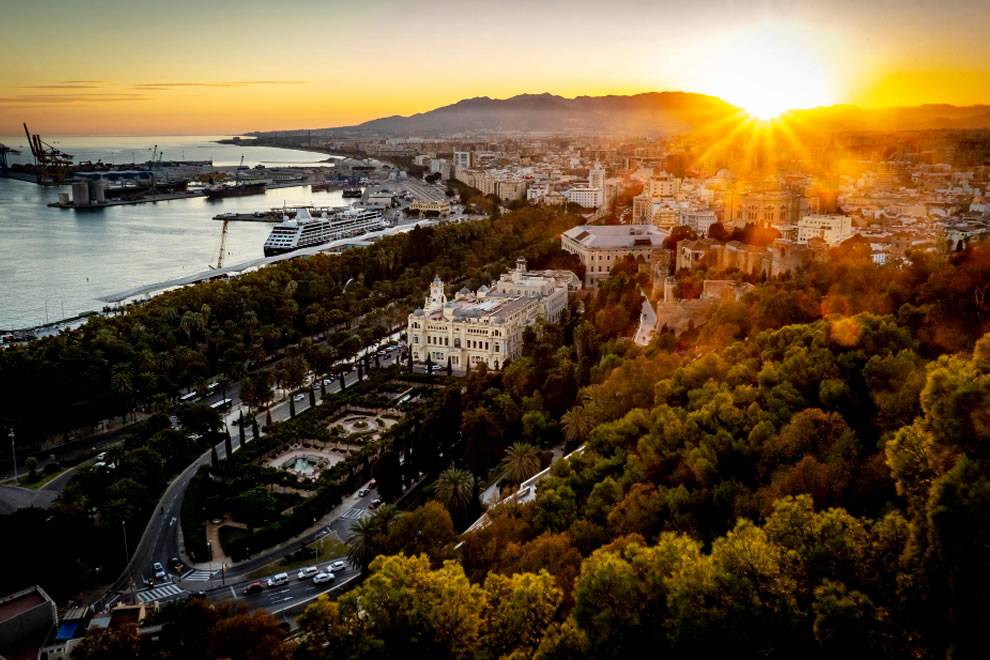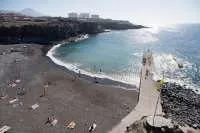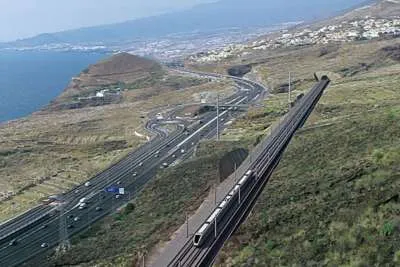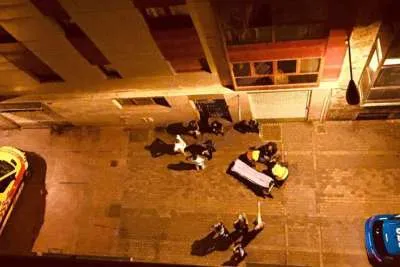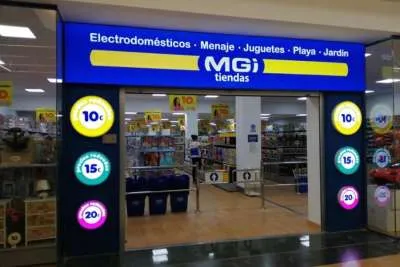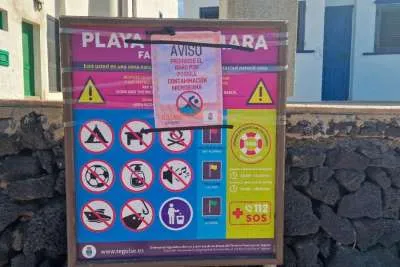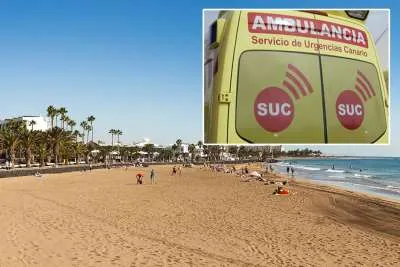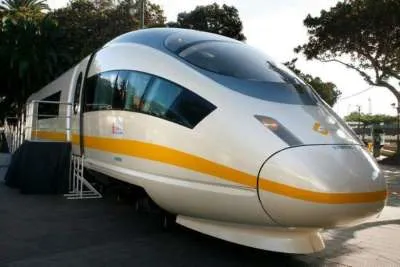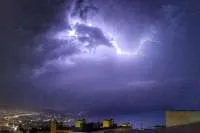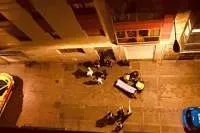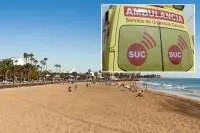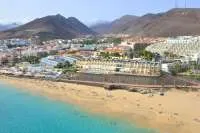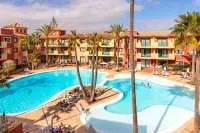Unveiling the Charms of Malaga: A Comprehensive Travel Guide
- 04-12-2023
- Travel
- Canarian Weekly
Today, we're diving deep into everything you need to know and do when you visit the captivating city of Málaga. By the end of this guide, we'll also suggest how much time you should set aside to immerse yourself in the city's charm.
Málaga: A Brief Overview
Málaga is tucked away in the Andalusian region on the southern coast of Spain, nestled between towering mountains and the shimmering Mediterranean Sea. You can fly into Málaga's airport, located west of the city, or hop on a high-speed train to the María Zambrano station.
Alternatively, you can take a bus to the Málaga bus station, conveniently located next to María Zambrano. Both stations are just a hop, skip, and jump away from the heart of Málaga.
Starting Your Journey: Gibralfaro Castle
To kick off your Málaga adventure, it's wise to swing by the tourist office in the city centre. In addition, the Gibralfaro Castle provides a fantastic introduction to the city. Make sure to download the free online audio guide to learn about the various parts of the castle while soaking in the stunning views of Málaga. The palace also houses a charming café, perfect for a quick pit stop before wrapping up your visit.
Once you've finished your castle tour, it's time to descend into the heart of Málaga. As you stroll downhill, you'll come across various viewpoints offering excellent city views. The descent is quite steep and bustling with people. Don't wear yourself out climbing the castle; a bus runs through downtown Málaga and conveniently takes you to the castle heights. Take our advice, ride the bus up and walk down.
One final tip: visiting the castle is a small fee, but it won't break the bank. You can purchase a combined ticket that includes the court and the Alcazaba, another significant Málaga monument we'll discuss next. We recommend buying the combined ticket to save some dough. It's worth starting your Málaga journey by climbing the Gibralfaro Castle to understand the city's layout and distribution better.
The Alcazaba: A Taste of Arab History
The second must-see spot in Málaga is another fortress, the Alcazaba. Of Arab origin, it's like a scaled-down version of the Alhambra in Granada. A walk through the interior of the Alcazaba is fascinating, giving you a sense of stepping into a maze. Along the way, you'll encounter gardens, fountains, and water channels that lend it an unmistakable charm.
A tip about accessing the Alcazaba: you can hike up from the city centre or take advantage of an elevator that takes you to the highest part of the fortress, right behind the Málaga City Hall building. The Alcazaba is a captivating visit, but it's crucial to approach it without overly high expectations. You won't find the decorative richness of Granada's Alhambra; it's a more straightforward place, but we highly recommend exploring it.
The Roman Theatre of Málaga: A Glimpse into the Past
The Roman Theatre of Málaga, at the foot of the Alcazaba, is the most significant archaeological remnant of Roman Málaga. It was built during the reign of Emperor Augustus in the first century AD.
The theatre features a small interpretation centre with free admission, from which you can access the theatre ruins. Many people admire the theater from the square in front but don't miss the opportunity to get up close and personal with this historical gem.
The Cathedral of Our Lady of the Incarnation: A Dominant Mark in the City
The Cathedral of Our Lady of the Incarnation leaves a dominant mark in the centre of Málaga. This Renaissance temple was only completed in the 18th century and is famously known as "La Manquita" because it's unfinished - you'll notice a missing tower on the facade. We didn't pay to visit the cathedral's interior, but if you're a cathedral buff, go ahead with Málaga's.
The Central Market of Atarazanas: A Must-Visit in Downtown Málaga
The Central Market of Atarazanas, built in the second half of the 19th century, is a must-visit downtown Málaga. It has two distinct entrances - one with a Hispano-Muslim style facade and the other with iron and glass, reflecting the existence of the shipyard. It's a market frequented by many locals, and although you'll also see tourists, it remains a real market where you can buy fresh produce.
In the last decade, Málaga has emerged as the leading European producer of exotic fruit, such as avocados and mangoes, which you'll find in the market stalls.
Marqués de Larios Street: The Most Famous Street in Málaga
Marqués de Larios Street, or simply Larios Street, is likely the most famous street in Málaga. It pays tribute to a 19th-century Malagan aristocrat. It's a pedestrian and commercial street that ends at Constitution Square, another critical point in downtown Málaga. Larios Street is renowned for its Christmas decorations, which light up before and after Christmas.
But downtown Málaga extends far beyond Larios Street; it's an endless maze of streets of all sizes and directions worth getting lost in.

The Málaga City Hall: A Neobaroque Building
The Málaga City Hall, housed in a neo-baroque building from the early 20th century, is flanked by the small and charming Pedro Luis Alonso Gardens, and in front of it, the Málaga Park, a Mediterranean garden built on land reclaimed from the sea.
Pier 1: A Shopping and Entertainment Centre
The Pier 1 is an open-air shopping and entertainment centre inaugurated in 2011, occupying part of the Málaga port. It's a delightful spot at any time of the day and also when evening falls. At one end of Pier 1 stands La Farola, Málaga's most famous lighthouse and a valid city symbol.
Málaga's Beaches: A Cherished Spot for Residents
Málaga boasts 14 kilometres of beaches cherished by its residents. Regardless of the weather and time of year, you'll always find people on the beaches, which are particularly lively during summer.
La Malagueta is the closest beach to downtown Málaga and one of the most popular. All the beaches are well-equipped and feature the famous beach bars, or "chiringuitos". Even if you didn't travel to Málaga for the beach, take the time to visit at least La Malagueta, the closest to the city centre, for a quick touch of a part of the city dearly loved by its locals.
Málaga: A City of Museums
Recently, Málaga has carved out a solid reputation as a city of museums. Let's quickly run through a selection of the most significant ones. Almost all are located in the city centre and house impressive art collections and objects of historical relevance to Málaga.
Educational Opportunities: Spanish Courses in Málaga
While exploring Málaga's rich cultural landscape, don't miss the chance to deepen your understanding of the Spanish language. Enrolling in one of the many Spanish courses in Málaga offers an unparalleled opportunity to enhance your language skills while experiencing the city's authentic atmosphere.
These courses cater to all levels, from beginners to advanced learners, and are designed to provide a comprehensive linguistic experience, combining classroom learning with practical, real-world interactions. This holistic approach bolsters your Spanish proficiency and provides a deeper insight into the local culture and lifestyle.
Malagan Cuisine: A Diverse Delight
And let's wrap up with food. Malagan cuisine is diverse, with a strong presence of fresh seafood, such as fish and shellfish. During the beach season, you'll see the grills where the most iconic Málaga dish, the sardine skewer, is prepared. You can enjoy the sardine skewer at the beach bars or an exciting place we recommend, El Tintero.
Although it's not downtown Málaga, you can quickly get there by bus. El Tintero is a unique restaurant where the price of the dishes depends on the type of tray or plate they're served on. You can ask for the menu and choose what you want to eat, but the usual way is to follow the movement of the servers who come and go with food trays in their hands, displaying the dish they're offering fresh out of the kitchen.
If you fancy a specific dish, signal to the waiter and keep the plate that interests you—naturally, the more premium the ingredient, the pricier the dish. El Tintero is a spot in Málaga you shouldn't miss.
Next, we have the Pimpi, a bar in the centre close to the Alcazaba and the Roman Theatre. It's the most famous tavern in Málaga and, although it's very touristy, it's worth visiting because it's also where locals go. Its interior is an absolute labyrinth and has a bustling outdoor terrace.
How Much Time Should You Spend in Málaga?
With so much to see and do, you're probably wondering how much time you should dedicate to the city. We recommend spending two to three nights, depending on whether you intend to visit one or several museums. The more museums you include in your visit, the more time you'll need. We hope you've enjoyed this comprehensive guide to Málaga. Until our next exploration of Málaga!
Other articles that may interest you...
Trending
Most Read Articles
Featured Videos
A Vision of Elvis Tenerife Promo
- 10-05-2025
Tenerife Travel Guide
- 13-12-2024
Live webcam from Lanzarote airport
- 13-12-2024


